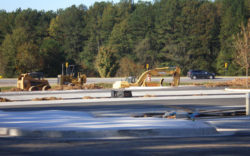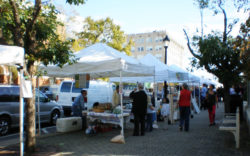One of my favorite parts of a road trip to the beach is cruising down back roads and seeing the South’s history and natural environment. The last thing I’d want to see is the same artificial suburban landscaping characteristic of metro Atlanta and, increasingly, Athens neighborhoods.
But the powers-that-be seem to think visitors to St. Simons Island (like many fans of the Bulldog Nation traveling to watch the Dawgs thump Florida) want the latter. Policy-makers are discussing altering the natural aesthetic to the entrance of St. Simons because the vegetated area has turned into a saltwater marsh that’s creating an unsightly view, according to tourists. To mitigate an “eyesore,†officials are contemplating removing dead vegetation or adding shrubbery to obscure the undesirable view. So, when we travel away from our manicured lawns and neighborhood entrances, we would arrive to see more artificial-looking landscapes.
Seeing that St. Simons’ officials were considering papering over the natural view because they believe visitors want more of the familiar in landscaping, I wondered how this trend was playing out in Athens.
Living in an urban community, many people are seldom able to experience unblemished natural areas. Fortunately in Athens, we are not far from some type of wilderness experience, whether it is looking at an untouched area while driving or being completely immersed on a walk through the woods. Still, it is possible in our community to avoid nature altogether by living in an ultra-manicured neighborhood, driving to the office and meeting our physical activity requirements inside a climate-controlled fitness club.
But interactions with nature are invaluable. For one, they provide us with physical and mental health benefits, such as reducing stress. And whether we like it or not, being in nature reminds us of our primordial selves, when we were forced to constantly meet the basic challenges of survival. Carl Jung believed that man’s disconnect with his primordial roots is the source of anxiety that reveals itself through the psychological disturbances so prevalent in modern man. Less philosophically, awesome nature provides us with the opportunity to appreciate something not man-made, a refreshing experience considering most of our existence takes place in a totally planned setting.
For most of us, our lives aren’t deeply connected to the outdoors, but it is no less important to the human experience. We should have access to this in some form; perhaps our residences would be an ideal venue. An essential reminder of this aspect of the human experience needs to be ready-at-hand, and developers should seek to incorporate it into our neighborhood design.
What I cannot understand is how some believe clear-cutting a huge area, constructing homes too close together and planning where every shrub will be is an attractive option. I’m not advocating for entirely untamed yards, but seeing a manmade pattern of trees repeating itself throughout a subdivision in a style reminiscent of a dystopic scene is disheartening.
Yet plenty of neighborhoods in Athens follow this approach, many of which are new student housing developments. Yet not all student housing has to resemble this; take Riverbend East for example. Natural growth decorates the median and areas between subdivisions, providing shade and character to the neighborhood.
But student housing isn’t the only type of development guilty of ultra-cultivated design. Increasingly, neighborhoods for families and young professionals are demonstrating the trend that has plagued so much of the metro Atlanta area. Compare the Towns Walk development off Timothy Road to Pulaski Heights. There doesn’t appear to be an original tree standing in Towns Walk, but Pulaski Heights, with its gnarly looking oaks, retains a sense of wonder and invites imagination.
These differences are a modern example of the age-old French garden vs. English garden rivalry. The French garden, with its use of geometric shapes, seeks to apply rational principles to bring nature under control, while the English garden provides man an opportunity for communion with the wild and gives one a sense of liberty.
Not only does residential wilderness provide man with existential and health benefits, but our ecosystem improves as well. Typical suburbia features a few alien plants that are not hospitable to local animals and require polluting fertilizers and herbicides. Even if there is only a small tree line that runs throughout a neighborhood, this provides enough habitat to significantly increase insect populations and, in turn, insect predators such as birds. Local extinction is an often-overlooked issue but nonetheless real. Without native vegetation, animals disappear from our area.
As entomologist Douglas Tallamy said, “The natural world is both beautiful and full of life. Why can’t our gardens reflect that?†In landscaping our yards, we can set an example for our neighbors by using native plants and allowing a certain wild aspect to remain. Not only will this have an ecological benefit, but exposure to the natural process will provide us a respite from our increasingly man-made habitat.
Like what you just read? Support Flagpole by making a donation today. Every dollar you give helps fund our ongoing mission to provide Athens with quality, independent journalism.










